McKinsey and other consulting firms’ consultants employ issue trees, which are effective tools, to solve business challenges. To work for any of the best consulting firms, you must be able to master them. These are a useful tool for any profession that demands you to solve problems. You will discover how to develop issue tree in this article, along with samples of issue trees for typical case interview types.
“You start with your initial hypothesis and branch out at each issue. When you’ve completed your issue tree, you have your problem-solving map. That’s the easy part. The difficult part will come when you have to dig deep to prove your hypothesis.”
Ethan M. Rasiel, The McKinsey Way
Basics of Issue Tree
Sadly, schools, including business schools, do not do a good job of teaching the idea of an issue tree. Because issue trees are the model for how consultants work, you can utilize them to address many challenging problems in your industry.
The four things you must “learn” to fully know issue trees.
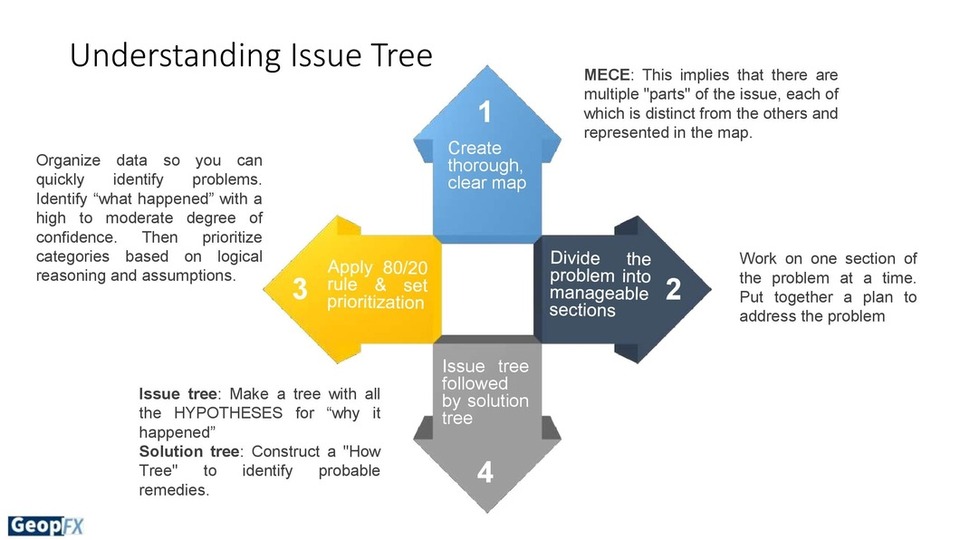
As an illustration, consider a business that operates online and is having trouble maintaining its newsletter subscriber base.
Let’s use the 4 specified components to try to comprehend the issue tree.
Create a thorough clear map using MECE principle
Our issue tree covers the entire problem area with the most plausible hypotheses, similar to a good map.

Divide the problem into manageable sections

Prioritization
Prioritize one of these categories as more likely than the others using logical reasoning and a number of assumptions. In this instance, the issues relating to clients quitting us voluntarily are given more weight.
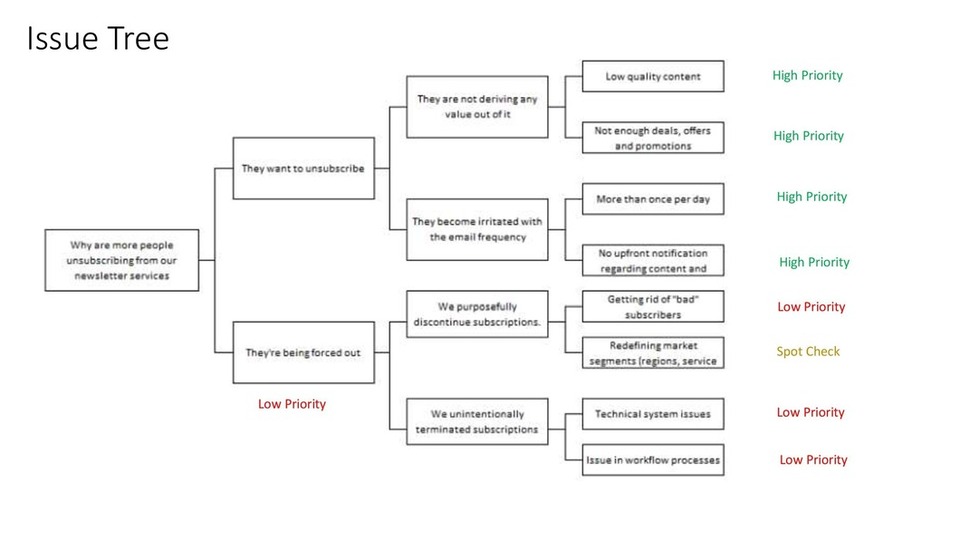
Issue tree & Solution tree
As we have already discussed the issue tree in detail, let’s look at the probable solution tree.
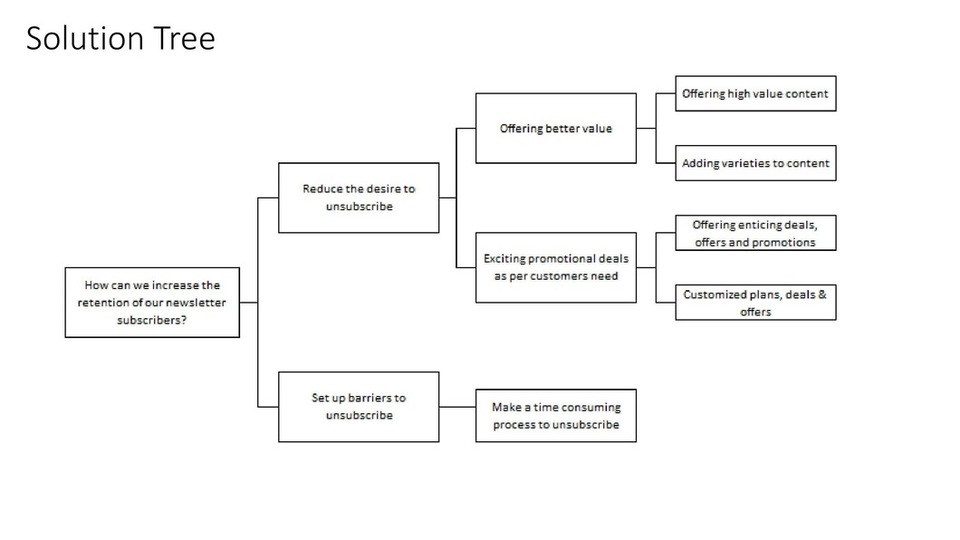
Not all categories would have fit into this since it is more difficult to map out all potential causes of a problem than it is to map out all potential solutions. If you do have a solution concept that doesn’t fall into one of these categories, you may still construct a category for it by abstracting what “kind” of solution it is.
Methods For Creating Issue Trees
Let’s first study the structure of any common issue tree before we examine the method.
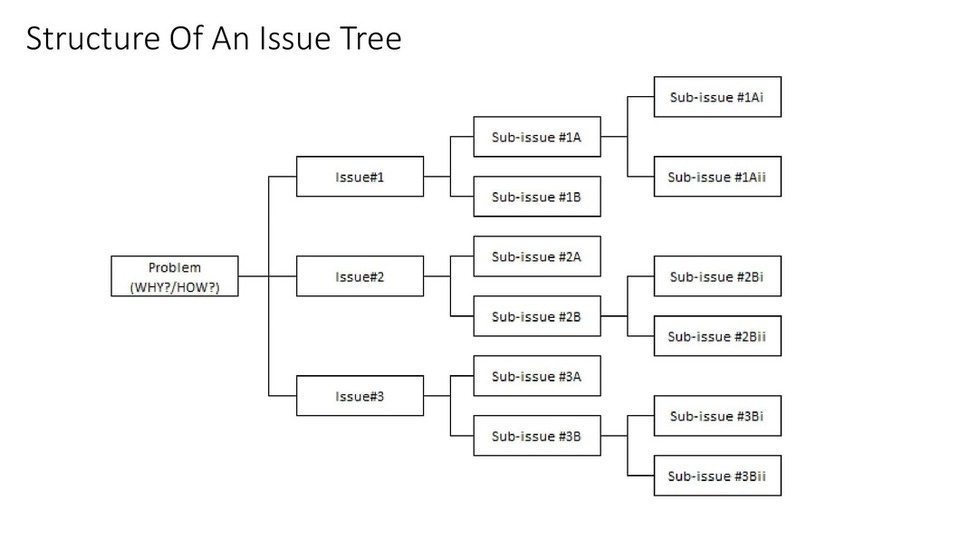
Issue Trees are a “problem structuring” tool to structure problems. MECE stands for Mutually Exclusive, Collectively Exhaustive, and it is a fundamental organizing principle for ideas that was popularized by Barbara Minto, a former McKinsey employee. Basically, it signifies that your reasoning is gap-free and exhaustive (all parts together exhaust the whole) (Mutually Exclusive, one part is different and independent from the other).
Method #1: Math Equation, Process & Conceptual Framework
Since most business issues are numerical, applying mathematical equations is important. They never have gaps or overlaps and are always MECE. All management consulting positions demand familiarity with statistics, quantitative data, and facts and recommendations supported by data. You will be evaluated on your mental math abilities because management consultants spend a lot of time dealing with numbers, analyses, charts, computations, and other math activities.
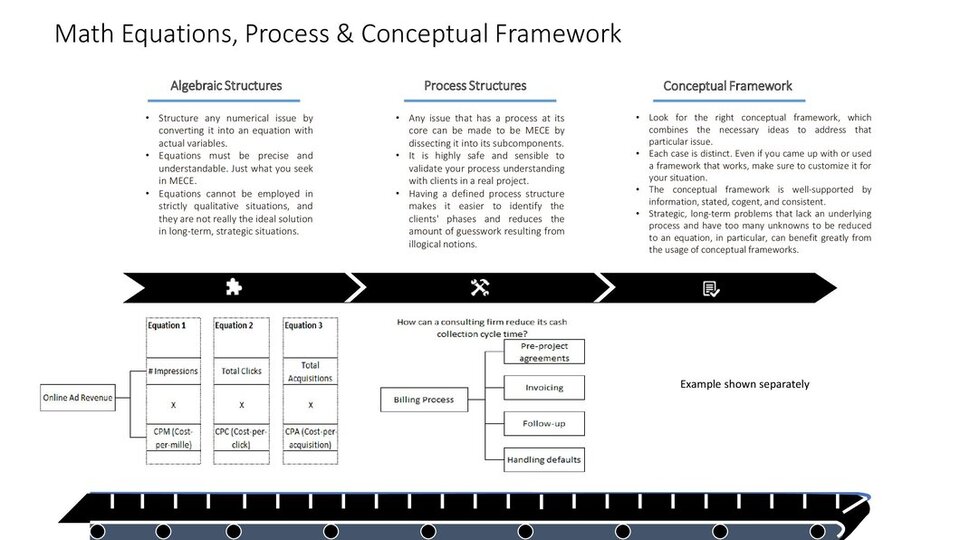
Example of Conceptual Framework
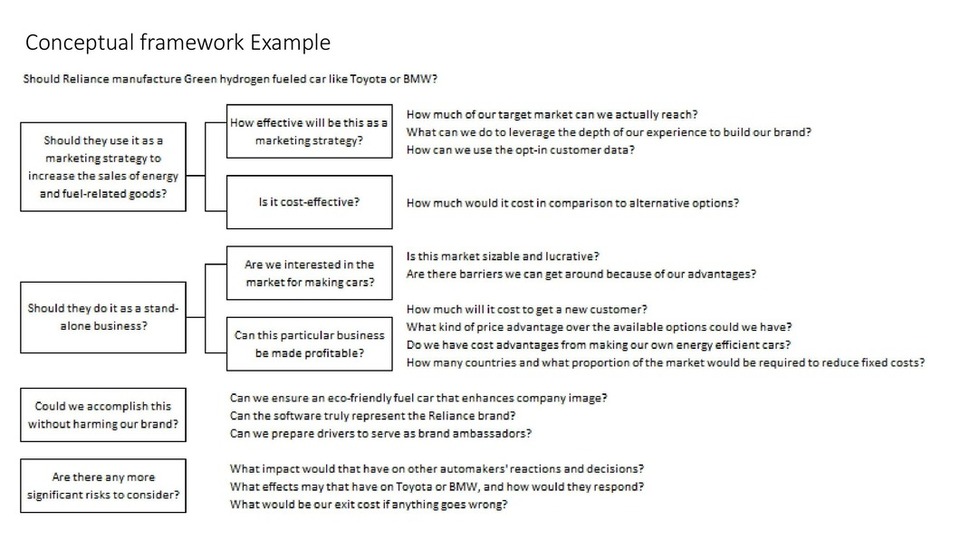
Method #2: Segmentation & Opposite Words
In order to arrange a problem, segmentations are typically overused, in part because they are simple to learn and simple to teach. By segmenting, the issue is essentially divided into smaller sections. For instance, you may divide a company’s clientele into groups based on their age, gender (male or female), location, etc.
There are numerous methods to divide up practically every issue, and if you don’t choose the appropriate one, you will waste time. Use segmentations in situations that are industry-specific, case-specific, and where there are “mix effects.” Segmentations can be used as a supplement if you think they will add important context to a case.
The opposite word structure actually doesn’t fit in the big picture of consulting thought because a client looking to improve performance needs to think strategically and also look for operational changes.
When you require a short structure to simply organize speech and when you are unable to discover another form of structure to deal with are the two situations in which you should employ it. Let’s say you have a 1- or 2-layer structure to provide an answer. Use of opposite words can always provide a further layer with minimal effort. It’s incredibly good to have this extra layer.
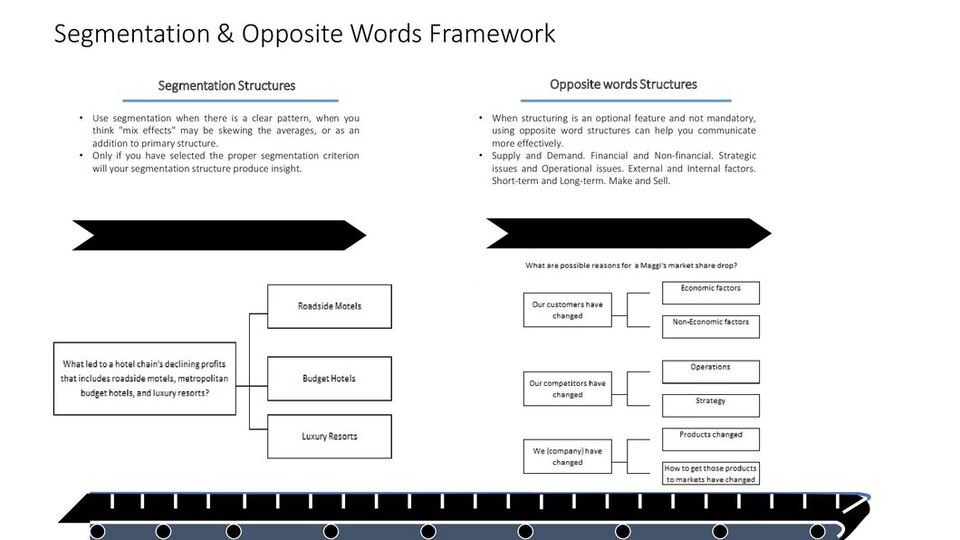
Method #3: Layering
Regardless of whether they are equations, this phase includes layering “mini MECE structures” on top of one another. The method used to construct Math Trees and Issue Trees, which involves layering the 5 Ways to be MECE, is extremely similar.
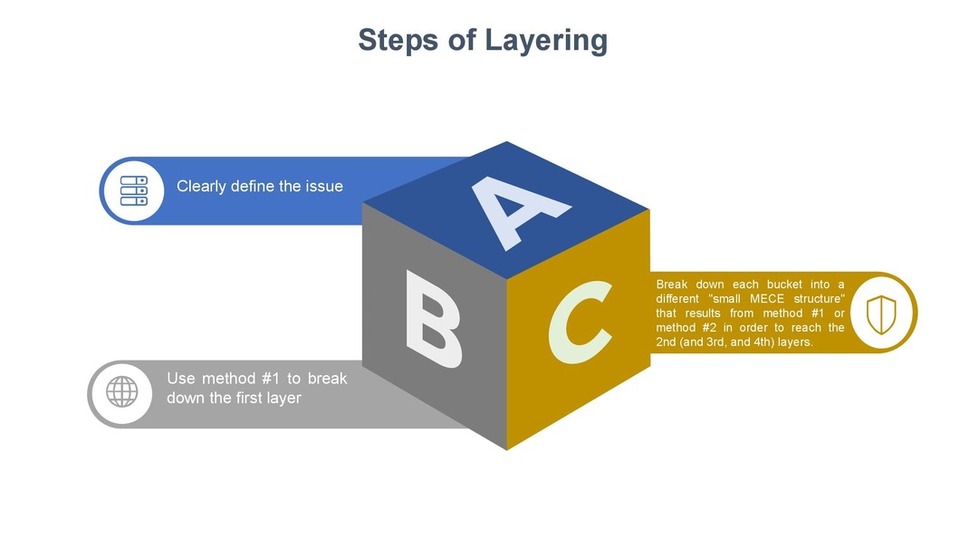
Let’s focus on one incident in particular: how Elon Musk came up with “The Boring Company,” a business that was established to effectively construct tunnels and address the traffic issue in Los Angeles. This has mainly 2 parts to it.
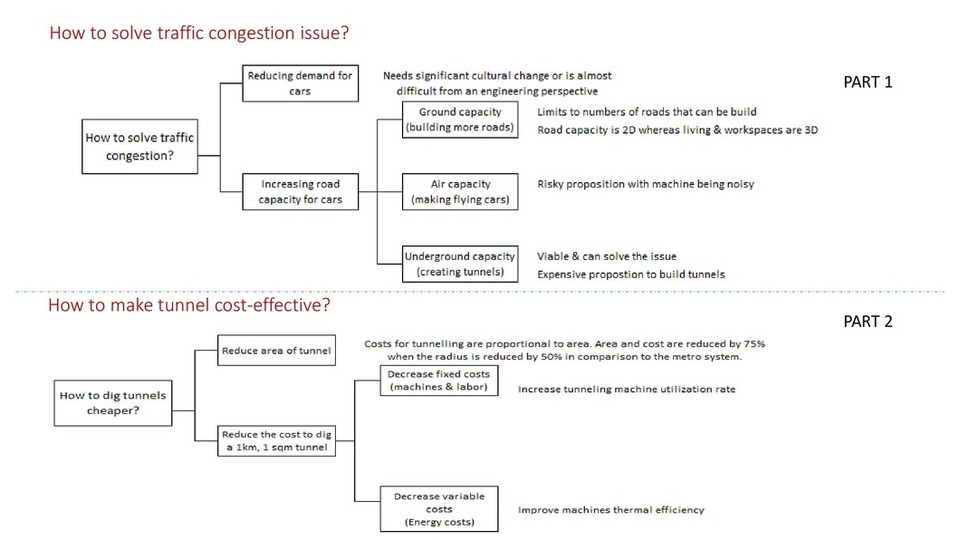
Method #4: Decision Trees
Decision trees are essentially Issue Trees that have IF-THEN functions added as “conditional operators.”
“AND” or “OR” relationships are used to logically connect everything that is not part of a mathematical relationship. Just like standard Issue Trees, Decision Trees offer an additional layer of reasoning in the form of IF-THEN expressions.
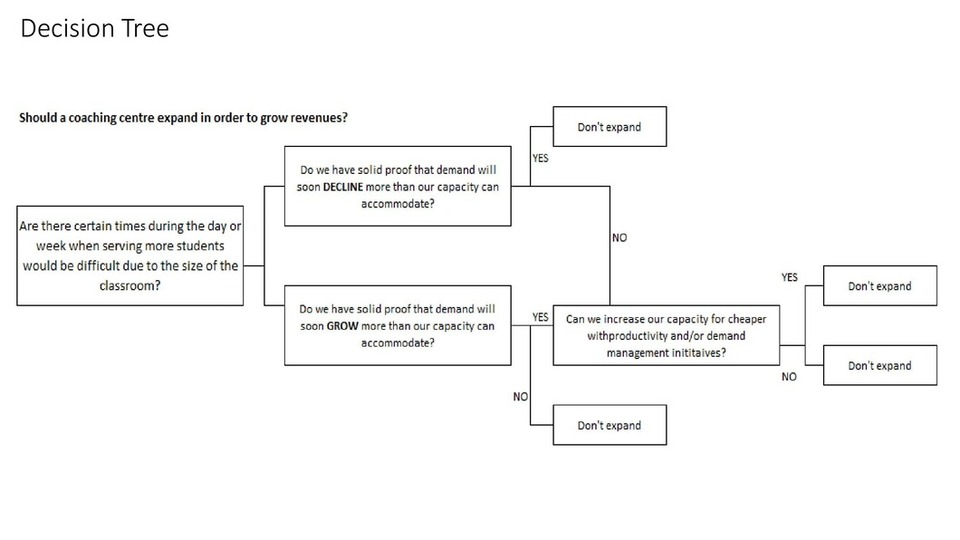
For “decision-making”-type problems, learning Conceptual Frameworks first will help immensely.
Conclusion
Having the knowledge and ability to construct MECE structures as needed is a very unique advantage. Either you are trying to land a job with a major consulting firm or you are working as a consultant trying to solve complex business challenges, it is advantageous. It’s difficult, and the majority of people simply aren’t capable of doing it. But if you have the correct methods, tools, and enough commitment, you can learn it.
